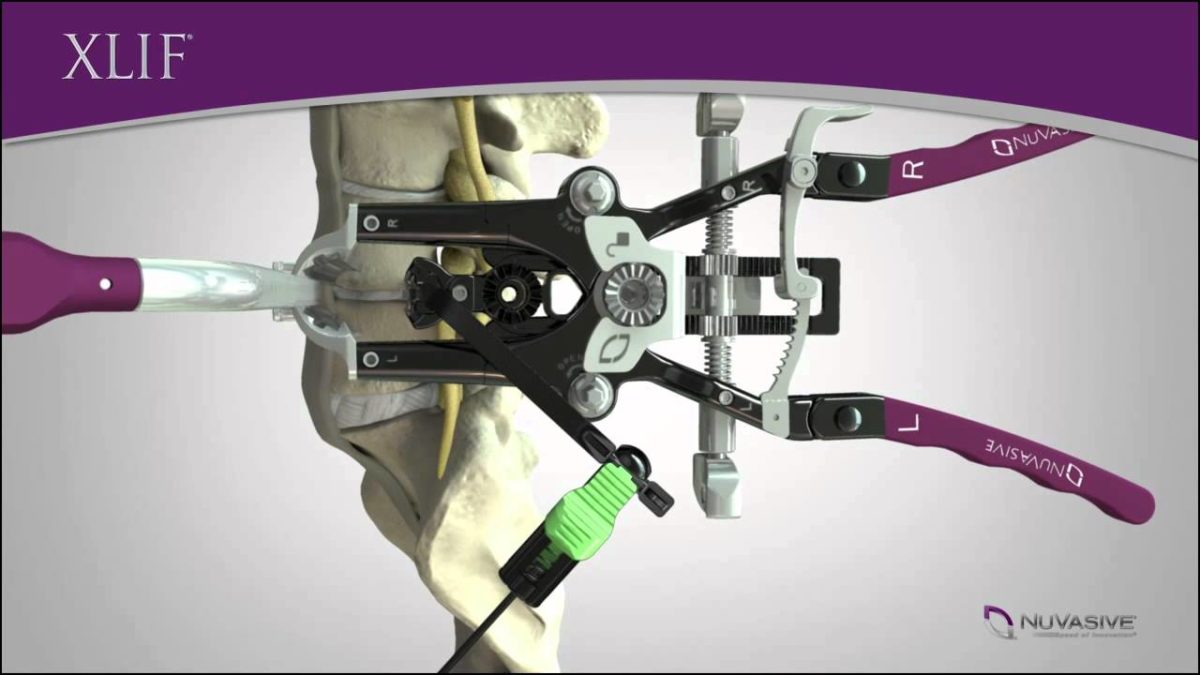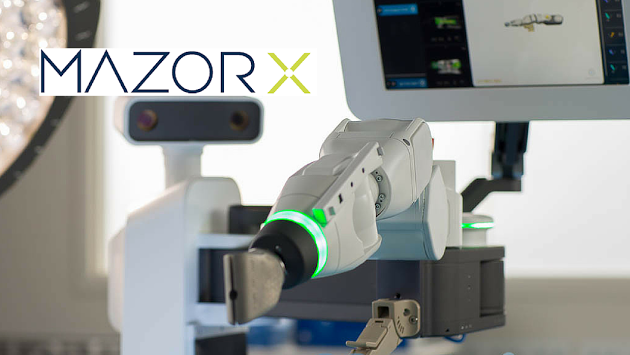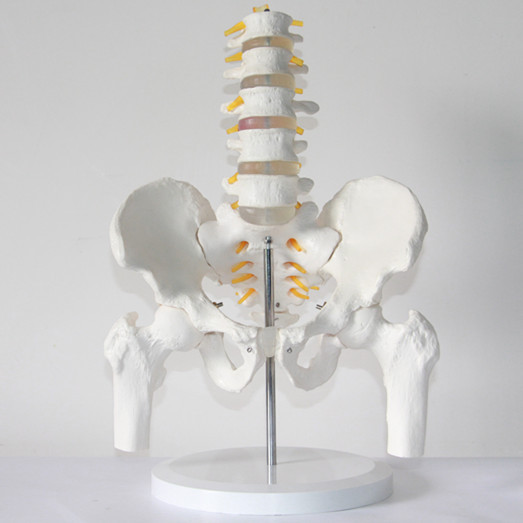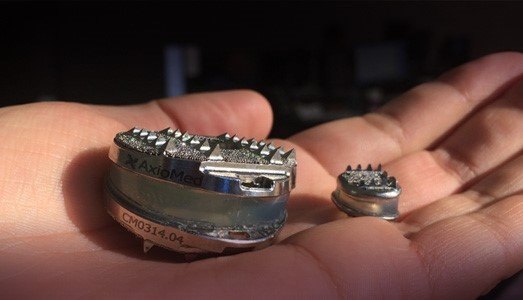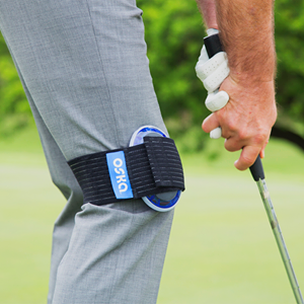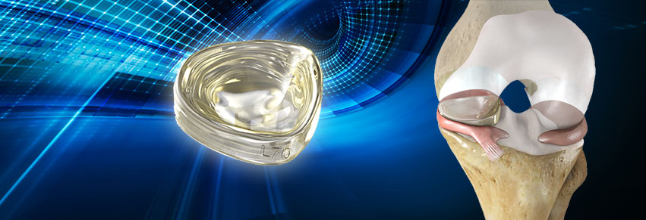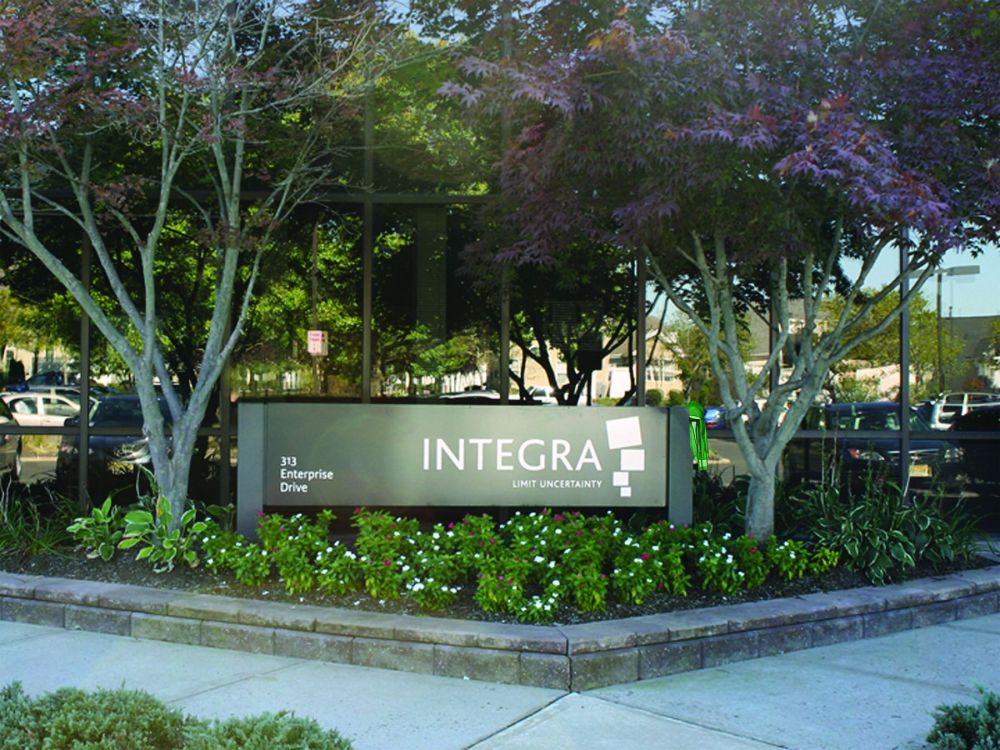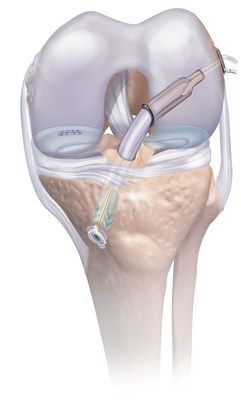CARLSBAD, Calif., March 15, 2017 (GLOBE NEWSWIRE) — Alphatec Holdings, Inc. (Nasdaq:ATEC), the parent company of Alphatec Spine, Inc., a provider of spinal fusion technologies, announced today financial results for the fourth quarter and full year ended December 31, 2016.
- Fourth quarter total net revenues of $27.1 million; revenue from the Company’s U.S. commercial business of $24.5 million.
- Annual total net revenues of $120.2 million; revenue from the Company’s U.S. commercial business of $106.9 million.
- Cash and cash equivalents of $19.6 million at the end of the fourth quarter.
Financial Results for the Fourth Quarter and Full Year Ended December 31, 2016
As a result of the sale of the Company’s international business in September 2016, the financial results and related assets and liabilities of such business have been excluded from continuing operations for all periods herein and reported as discontinued operations.
U.S. commercial revenues for the fourth quarter of 2016 were $24.5 million, down 16.9%, compared to $29.5 million reported for the fourth quarter of 2015. For the full year ended December 31, 2016, U.S. commercial revenues were $106.9 million, representing a decrease of 6.7%, compared to $114.6 million reported for full year 2015.
For the fourth quarter 2016, U.S. commercial revenues decreased primarily as a result of a decrease in the Company’s stocking business, lower U.S. hospital unit volume and pricing declines.
For the full year 2016, U.S. commercial revenues decreased primarily as a result of a decrease in the Company’s stocking business and pricing declines, partially offset by higher hospital volumes.
U.S. gross profit and gross margin for the fourth quarter of 2016 were $15.2 million and 62.2%, respectively, compared to $21.4 million and 72.6%, respectively, for the fourth quarter of 2015. For the full year 2016, U.S. gross profit and gross margin were $71.7 million and 67.0%, respectively, compared to $79.5 million and 69.4%, respectively, for full year 2015.
For the fourth quarter and full year 2016, gross margins declined as compared to 2015, primarily as a result of: higher product costs driven by lower than planned sourcing volumes throughout 2016, obsolescence charges related to product portfolio management, and price declines, partially offset by the absence of one-time charges that occurred in 2015.
Total operating expenses for the fourth quarter of 2016 were $21.7 million, reflecting a decrease of $7.4 million, or approximately 25% improvement over the fourth quarter of 2015. For the full year 2016, total operating expenses were $91.5 million, reflecting a decrease of $172.4 million compared to the full year 2015, which included non-cash goodwill and intangible asset impairment charges totaling $164.3 million.
GAAP net loss for the fourth quarter of 2016 was $4.7 million or ($0.56) per share (basic and diluted), compared to a net loss of $9.9 million, or ($1.18) per share (basic and diluted) for the fourth quarter of 2015. For the full year, 2016 GAAP net loss was $30.3 million or ($3.57) per share (basic and diluted), compared to a net loss of $178.7 million, or ($21.53) per share basic and diluted for full year 2015. GAAP net loss for full year 2015 was unfavorably impacted by $164.3 million of non-cash impairment charges.
Adjusted EBITDA in the fourth quarter of 2016 was $(2.2) million, compared to $3.4 million for the fourth quarter of 2015. For the full year 2016, Adjusted EBITDA was $1.1 million, compared to $10.5 million for the full year 2015. Please refer to the table, “Alphatec Holdings, Inc. Reconciliation of Non-GAAP Financial Measures” that follows for more detailed information.
Total Current and Long-term debt, includes $34.8 million in term debt and $12.5 million outstanding under the Company’s revolving credit facility at December 31, 2016. This compares to $29.9 million in term debt and $12.2 million outstanding under the Company’s revolving credit facility at September 30, 2016.
Cash and cash equivalents were $19.6 million at December 31, 2016, compared to $25.6 million reported at September 30, 2016.
“Through our actions in 2016, we positioned the organization to be more responsive to today’s world-class spine surgeons, our employees and shareholders,” said Terry Rich, Chief Executive Officer of Alphatec. “We look forward to providing you with a company update and more details on our plans in connection with the announcement of our first quarter 2017 results.”
Non-GAAP Information
To supplement the Company’s financial statements presented in accordance with U.S. generally accepted accounting principles (GAAP), the Company reports certain non-GAAP financial measures such as Adjusted EBITDA. Adjusted EBITDA included in this press release is a non-GAAP financial measure that represents net income (loss), excluding the effects of interest, taxes, depreciation, amortization, stock-based compensation expenses, in process research and development (IPR&D) expenses and other non-recurring income or expense items, such as impairments, restructuring expenses, severance expenses, litigation expenses, damages associated with ongoing litigation and transaction-related expenses. The Company believes that non-GAAP Adjusted EBITDA provides investors with an additional tool for evaluating the Company’s core performance, which management uses in its own evaluation of continuing operating performance, and a baseline for assessing the future earnings potential of the Company. For completeness, management uses non-GAAP Adjusted EBITDA in conjunction with GAAP earnings and earnings per common share measures. The Company’s Adjusted EBITDA measure may not provide information that is directly comparable to that provided by other companies in the Company’s industry, as other companies in the industry may calculate non-GAAP financial results differently, particularly related to non-recurring, unusual items. Adjusted EBITDA should be considered in addition to, and not as a substitute for, or superior to, financial measures calculated in accordance with GAAP. Included below are reconciliations of the non-GAAP financial measures to the comparable GAAP financial measure.
About Alphatec Spine
Alphatec Spine, Inc., a wholly owned subsidiary of Alphatec Holdings, Inc., is a medical device company that designs, develops and markets spinal fusion technology products and solutions for the treatment of spinal disorders associated with disease and degeneration, congenital deformities and trauma. The Company’s mission is to improve lives by delivering advancements in spinal fusion technologies. The Company markets its products in the U.S. via independent sales agents and a direct sales force.
Additional information can be found at www.alphatecspine.com.
Forward Looking Statements
This press release may contain “forward-looking statements” within the meaning of the Private Securities Litigation Reform Act of 1995 that involve risks and uncertainty. Such statements are based on management’s current expectations and are subject to a number of risks and uncertainties that could cause actual results to differ materially from those described in the forward-looking statements. Alphatec cautions investors that there can be no assurance that actual results or business conditions will not differ materially from those projected or suggested in such forward-looking statements as a result of various factors. Forward looking statements include the references to the optimization of the Company’s product portfolio through active product lifecycle management and the Company positioning itself to be more responsive to surgeons, employees and shareholders. In addition, the unaudited financial results for the fourth quarter and year ended December 31, 2016 included in this press release are preliminary and represent the most current information available to management. The important factors that could cause actual operating results to differ significantly from those expressed or implied by such forward-looking statements include, but are not limited to: adjustments to the unaudited financial results reported for the fourth quarter and year ended December 31, 2016 in connection with the completion of the Company’s final closing process and procedures, final adjustments, completion of the audit by the Company’s independent registered public accounting firm and other developments that may arise during the preparation of the Company’s Annual Report on Form 10-K; the uncertainty of success in developing new products or products currently in Alphatec Spine’s pipeline; the uncertainties in the Company’s ability to execute upon its strategic operating plan; the uncertainties regarding the ability to successfully license or acquire new products, and the commercial success of such products; failure to achieve acceptance of Alphatec Spine’s products by the surgeon community, including Battalion and Arsenal Deformity; failure to obtain FDA clearance or approval or international regulatory approvals for new products, or unexpected or prolonged delays in the process; continuation of favorable third party payor reimbursement for procedures performed using the Company’s products; unanticipated expenses or liabilities or other adverse events affecting cash flow or the Company’s ability to successfully control its costs or achieve profitability; uncertainty of additional funding; the Company’s ability to compete with other competing products and with emerging new technologies; product liability exposure; an unsuccessful outcome in any litigation in which the Company is a defendant; patent infringement claims; claims related to the Company’s intellectual property and the Company’s ability to meet its financial obligations under its credit agreements and the Orthotec settlement agreement. The words “believe,” “will,” “should,” “expect,” “intend,” “estimate” and “anticipate,” variations of such words and similar expressions identify forward-looking statements, but their absence does not mean that a statement is not a forward-looking statement. Please refer to the risks detailed from time to time in Alphatec’s SEC reports, including its Annual Report Form 10-K for the year ended December 31, 2015, filed on March 15, 2016 with the Securities and Exchange Commission, and its Amended Annual Report Form 10-K/A filed on April 29, 2016, as well as other filings on Form 10-Q and periodic filings on Form 8-K. Alphatec disclaims any intention or obligation to update or revise any forward-looking statements, whether as a result of new information, future events, or otherwise, unless required by law.
|
|
| ALPHATEC HOLDINGS, INC. |
|
| CONDENSED CONSOLIDATED STATEMENTS OF OPERATIONS |
|
| (in thousands, except per share amounts – unaudited) |
|
|
|
|
|
|
|
|
|
|
|
|
|
|
|
|
|
|
|
|
|
|
|
|
|
Three Months Ended |
|
|
Year Ended |
|
|
|
December 31, |
|
|
December 31, |
|
|
|
2016 |
|
2015 |
|
|
2016 |
|
2015 |
|
|
|
|
|
|
|
|
|
|
|
|
|
Revenues |
$ |
27,090 |
|
|
$ |
34,791 |
|
|
|
$ |
120,248 |
|
|
$ |
134,388 |
|
|
|
Cost of revenues |
|
12,463 |
|
|
|
11,192 |
|
|
|
|
44,114 |
|
|
|
46,366 |
|
|
|
Gross profit |
|
14,627 |
|
|
|
23,599 |
|
|
|
|
76,134 |
|
|
|
88,022 |
|
|
|
|
|
54.0 |
% |
|
|
67.8 |
% |
|
|
|
63.3 |
% |
|
|
65.5 |
% |
|
|
Operating expenses: |
|
|
|
|
|
|
|
|
|
|
Research and development |
|
2,449 |
|
|
|
8,077 |
|
|
|
|
9,248 |
|
|
|
17,615 |
|
|
|
In-process research and development |
|
– |
|
|
|
– |
|
|
|
|
– |
|
|
|
274 |
|
|
|
Sales and marketing |
|
11,464 |
|
|
|
13,937 |
|
|
|
|
50,962 |
|
|
|
51,801 |
|
|
|
General and administrative |
|
7,092 |
|
|
|
6,547 |
|
|
|
|
26,339 |
|
|
|
28,126 |
|
|
|
Amortization of intangible assets |
|
172 |
|
|
|
304 |
|
|
|
|
934 |
|
|
|
1,200 |
|
|
|
Impairment of goodwill and intangibles |
|
– |
|
|
|
– |
|
|
|
|
1,736 |
|
|
|
164,263 |
|
|
|
Restructuring expenses |
|
514 |
|
|
|
246 |
|
|
|
|
2,292 |
|
|
|
597 |
|
|
|
Total operating expenses |
|
21,691 |
|
|
|
29,111 |
|
|
|
|
91,511 |
|
|
|
263,876 |
|
|
|
Operating loss |
|
(7,064 |
) |
|
|
(5,512 |
) |
|
|
|
(15,377 |
) |
|
|
(175,854 |
) |
|
|
Interest and other income (expense), net |
|
(2,689 |
) |
|
|
(769 |
) |
|
|
|
(15,558 |
) |
|
|
3,455 |
|
|
|
Pretax loss |
|
(9,753 |
) |
|
|
(6,281 |
) |
|
|
|
(30,935 |
) |
|
|
(172,399 |
) |
|
|
Income tax provision (benefit) |
|
474 |
|
|
|
182 |
|
|
|
|
(4,488 |
) |
|
|
(1,146 |
) |
|
|
Loss from continuing operations |
|
(10,227 |
) |
|
|
(6,463 |
) |
|
|
|
(26,447 |
) |
|
|
(171,253 |
) |
|
|
Income (loss) from discontinued operations |
|
5,481 |
|
|
|
(3,440 |
) |
|
|
|
(3,870 |
) |
|
|
(7,423 |
) |
|
|
Net loss |
$ |
(4,746 |
) |
|
$ |
(9,903 |
) |
|
|
$ |
(30,317 |
) |
|
$ |
(178,676 |
) |
|
|
|
|
|
|
|
|
|
|
|
|
|
|
|
|
|
|
|
|
|
|
|
|
Net loss per share continuing operations |
$ |
(1.21 |
) |
|
$ |
(0.77 |
) |
|
|
$ |
(3.11 |
) |
|
$ |
(20.64 |
) |
|
|
Net income (loss) per share discontinued operations |
|
0.65 |
|
|
|
(0.41 |
) |
|
|
|
(0.46 |
) |
|
|
(0.89 |
) |
|
|
Net loss per share – basic and diluted |
$ |
(0.56 |
) |
|
$ |
(1.18 |
) |
|
|
$ |
(3.57 |
) |
|
$ |
(21.53 |
) |
|
|
|
|
|
|
|
|
|
|
|
|
|
Weighted-average shares – basic and diluted |
|
8,465 |
|
|
|
8,376 |
|
|
|
|
8,495 |
|
|
|
8,298 |
|
|
|
|
|
|
|
|
|
|
|
|
|
|
|
|
|
ALPHATEC HOLDINGS, INC. |
|
|
CONDENSED CONSOLIDATED BALANCE SHEETS |
|
|
(in thousands – unaudited) |
|
|
|
|
|
|
|
|
|
|
|
|
|
|
|
December 31, |
|
December 31, |
|
|
|
2016 |
|
2015 |
|
|
ASSETS |
|
|
|
|
|
Current assets: |
|
|
|
|
|
Cash and cash equivalents |
$ |
19,593 |
|
|
$ |
6,295 |
|
|
|
Restricted cash |
|
– |
|
|
|
2,350 |
|
|
|
Accounts receivable, net |
|
18,512 |
|
|
|
26,870 |
|
|
|
Inventories, net |
|
30,093 |
|
|
|
32,632 |
|
|
|
Prepaid expenses and other current assets |
|
4,262 |
|
|
|
3,138 |
|
|
|
Current assets of discontinued operations |
|
364 |
|
|
|
30,210 |
|
|
|
Total current assets |
|
72,824 |
|
|
|
101,495 |
|
|
|
|
|
|
|
|
|
Property and equipment, net |
|
15,076 |
|
|
|
16,067 |
|
|
|
Intangibles, net |
|
5,711 |
|
|
|
8,806 |
|
|
|
Other assets |
|
516 |
|
|
|
502 |
|
|
|
Noncurrent assets of discontinued operations |
|
61 |
|
|
|
19,471 |
|
|
|
Total assets |
$ |
94,188 |
|
|
$ |
146,341 |
|
|
|
|
|
|
|
|
|
LIABILITIES AND STOCKHOLDERS’ DEFICIT |
|
|
|
|
|
Current liabilities: |
|
|
|
|
|
Accounts payable |
$ |
8,701 |
|
|
$ |
13,542 |
|
|
|
Accrued expenses |
|
27,981 |
|
|
|
21,175 |
|
|
|
Common stock warrant liabilities |
|
– |
|
|
|
687 |
|
|
|
Current portion of long-term debt |
|
3,113 |
|
|
|
79,742 |
|
|
|
Current liabilities of discontinued operations |
|
732 |
|
|
|
9,891 |
|
|
|
Total current liabilities |
|
40,527 |
|
|
|
125,037 |
|
|
|
|
|
|
|
|
|
Total long-term liabilities |
|
71,954 |
|
|
|
32,761 |
|
|
|
Long-term liabilities of discontinued operations |
|
– |
|
|
|
1,516 |
|
|
|
Redeemable preferred stock |
|
23,603 |
|
|
|
23,603 |
|
|
|
Stockholders’ deficit |
|
(41,896 |
) |
|
|
(36,576 |
) |
|
|
Total liabilities and stockholders’ deficit |
$ |
94,188 |
|
|
$ |
146,341 |
|
|
|
|
|
|
|
|
|
|
| ALPHATEC HOLDINGS, INC. |
|
| RECONCILIATION OF NON-GAAP FINANCIAL MEASURES |
|
| (in thousands, except per share amounts – unaudited) |
|
|
|
|
|
|
|
|
|
|
|
|
|
|
|
|
|
|
|
|
|
|
|
|
|
|
|
|
|
|
|
|
|
Three Months Ended |
|
|
Year Ended |
|
|
|
December 31, |
|
|
December 31, |
|
|
|
2016 |
|
2015 |
|
|
2016 |
|
2015 |
|
|
|
|
|
|
|
|
|
|
|
|
|
Operating loss, as reported |
$ |
(7,064 |
) |
|
$ |
(5,512 |
) |
|
|
$ |
(15,377 |
) |
|
$ |
(175,854 |
) |
|
|
Add back: |
|
|
|
|
|
|
|
|
|
|
Depreciation |
|
1,735 |
|
|
|
3,310 |
|
|
|
|
7,387 |
|
|
|
10,802 |
|
|
|
Amortization of intangible assets |
|
693 |
|
|
|
327 |
|
|
|
|
1,608 |
|
|
|
2,968 |
|
|
|
Total EBITDA |
|
(4,636 |
) |
|
|
(1,875 |
) |
|
|
|
(6,382 |
) |
|
|
(162,084 |
) |
|
|
|
|
|
|
|
|
|
|
|
|
|
Add back significant items: |
|
|
|
|
|
|
|
|
|
|
Stock-based compensation |
|
1,931 |
|
|
|
5,004 |
|
|
|
|
3,441 |
|
|
|
7,444 |
|
|
|
In-process research and development |
|
– |
|
|
|
– |
|
|
|
|
– |
|
|
|
274 |
|
|
|
Goodwill and intangible impairment |
|
– |
|
|
|
– |
|
|
|
|
1,736 |
|
|
|
164,263 |
|
|
|
Restructuring and other charges |
|
514 |
|
|
|
246 |
|
|
|
|
2,292 |
|
|
|
597 |
|
|
|
|
|
|
|
|
|
|
|
|
|
|
EBITDA, as adjusted for significant items |
$ |
(2,191 |
) |
|
$ |
3,375 |
|
|
|
$ |
1,087 |
|
|
$ |
10,494 |
|
|
|
|
|
|
|
|
|
|
|
|
|
| ALPHATEC HOLDINGS, INC. |
|
| RECONCILIATION OF REVENUES AND GROSS PROFIT |
|
| (in thousands, except percentages – unaudited) |
|
|
|
|
|
|
|
|
|
|
|
|
|
|
|
|
|
Three Months Ended |
|
|
|
|
|
|
December 31, |
|
% Change |
|
|
|
|
2016 |
|
2015 |
|
|
|
|
|
|
|
|
|
|
|
Revenues by source |
|
|
|
|
|
U.S. commercial revenue |
$ |
24,487 |
|
|
$ |
29,479 |
|
|
-16.9 |
% |
|
|
|
Other |
|
2,603 |
|
|
|
5,312 |
|
|
-51.0 |
% |
|
|
|
Total revenues |
$ |
27,090 |
|
|
$ |
34,791 |
|
|
-22.1 |
% |
|
|
|
|
|
|
|
|
|
|
|
Gross profit by source |
|
|
|
|
|
U.S. |
$ |
15,243 |
|
|
$ |
21,396 |
|
|
|
Other |
|
(616 |
) |
|
|
2,203 |
|
|
|
Total gross profit |
$ |
14,627 |
|
|
$ |
23,599 |
|
|
|
|
|
|
|
|
|
|
|
|
|
Gross profit margin by source |
|
|
|
|
|
U.S. |
|
62.2 |
% |
|
|
72.6 |
% |
|
|
Other |
|
-23.7 |
% |
|
|
41.5 |
% |
|
|
Total gross profit margin |
|
54.0 |
% |
|
|
67.8 |
% |
|
|
|
|
|
Year Ended |
|
|
|
|
|
|
December 31, |
|
% Change |
|
|
|
|
2016 |
|
2015 |
|
|
|
|
|
|
|
|
|
|
|
Revenues by source |
|
|
|
|
|
U.S. commercial revenue |
$ |
106,932 |
|
|
$ |
114,578 |
|
|
-6.7 |
% |
|
|
|
Other |
|
13,316 |
|
|
|
19,810 |
|
|
-32.8 |
% |
|
|
|
Total revenues |
$ |
120,248 |
|
|
$ |
134,388 |
|
|
-10.5 |
% |
|
|
|
|
|
|
|
|
|
|
|
Gross profit by source |
|
|
|
|
|
U.S. |
$ |
71,669 |
|
|
$ |
79,501 |
|
|
|
Other |
|
4,465 |
|
|
|
8,521 |
|
|
|
Total gross profit |
$ |
76,134 |
|
|
$ |
88,022 |
|
|
|
|
|
|
|
|
|
Gross profit margin by source |
|
|
|
|
|
U.S. |
|
67.0 |
% |
|
|
69.4 |
% |
|
|
Other |
|
33.5 |
% |
|
|
43.0 |
% |
|
|
Total gross profit margin |
|
63.3 |
% |
|
|
65.5 |
% |
|
|
CONTACT: Investor/Media Contact:
Christine Zedelmayer
Investor Relations
Alphatec Spine, Inc.
(760) 494-6610
czedelmayer@alphatecspine.com

